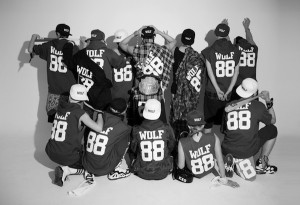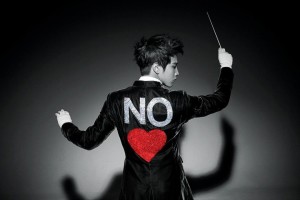 It’s been a couple of months since accusations of sajaegi, or chart manipulation, has reared its ugly head. This time the accusing source is from an actual idol, Jun.K of 2PM firing a shot on Twitter at Teen Top after the group beat out 2PM for first place on a recent episode of Music Core.
It’s been a couple of months since accusations of sajaegi, or chart manipulation, has reared its ugly head. This time the accusing source is from an actual idol, Jun.K of 2PM firing a shot on Twitter at Teen Top after the group beat out 2PM for first place on a recent episode of Music Core.
While many idol groups have been burned at the stake over accusations of sajaegi, there’s yet to be any formal consensus over which groups actually deserve to be put on trial. This has resulted in an outlandish McCarthy era witch hunt in which fandoms accuse one another of sajaegi in order to validate the popularity of those who have been deemed “pure” by the court of public opinion.
Not that there can ever be an objective method of seeking out sajaegi culprits, but analyzing publicly accessible data such as Gaon’s weekly digital singles chart sheds some light on the matter. Looking at the promoted singles of idol groups since the chart’s inception, from 2010-2014, I’ve identified the songs which have allowed artists to springboard from their previous peak position while also giving the artist a first-time achievement of reaching the top 20 after previously failing to do so.
Please note that this data does not immediately implicate digital sajaegi as advancement in the charts could have possibly been achieved without undergoing such methods, but it does bring into question whether or not extra “help” was required in order to do so. This could very well be a list of songs which helped hardworking artists receive the recognition they deserve, in ascending order of those which were helped the most by it. It’s all a matter of perspective.
 12th: Nine Muses – “Dolls” (2013)
12th: Nine Muses – “Dolls” (2013)
Peak Position: 17
Previous Peak: 33 (“Ticket”, 2012)
Difference: +16
This is honestly not even that big of a leap in the charts. Nine Muses can almost be used as a control group of what a “natural” rise in the charts looks like. The group had been gradually climbing the charts with each promotion since “No Playboy” and their linear escalation landed them their first top 20 hit in due time.
 11th : Ladies Code – “Pretty Pretty” (2013)
11th : Ladies Code – “Pretty Pretty” (2013)
Peak Position: 16
Previous Peak: 33 (“Bad Girl”, 2013)
Difference: +18
Considering recent events, this is a rather moot discussion.
 T-10th: Secret – “Magic” (2010)
T-10th: Secret – “Magic” (2010)
Peak Position: 2
Previous Peak: 25 (“I Want You Back”, 2009)
Difference: +23
While Secret’s jump from a peak of 25 to peaking at number 2 within a matter of months may seem unprecedented today, keep in mind that there wasn’t as much competition back in 2010. The idol market wasn’t as yet saturated and it was a very lucrative time for girl groups to manifest and take hold.
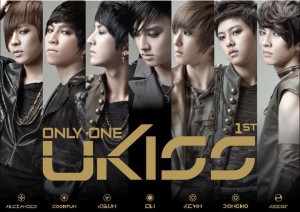 T-10th: U-Kiss – “Binguel Binguel” (2010)
T-10th: U-Kiss – “Binguel Binguel” (2010)
Peak Position: 13
Previous Peak: 36 (“Man Man Ha Ni”, 2009)
Difference: +23
Brave Brothers’ first appearance on this list.
 T-10th: BtoB – “Beep Beep” (2014)
T-10th: BtoB – “Beep Beep” (2014)
Peak Position: 18
Previous Peak: 41 (“Thriller”, 2013)
Difference: +23
Brave Brothers’ second appearance on this list.
Peak Position: 10
Previous Peak: 36 (“Russian Roulette”, 36)
Difference: +26
Like Ladies’ Code, Spica is a vocals-oriented group which releases high quality music. “Tonight” added enough spice into the formula to finally get them over the hump. Move on folks; nothing more to see here.
Peak Position: 11
Previous Peak: 40 (“Confused”, 2013)
Difference: +29
The data is a bit skewed here because I omitted “Moya” since that was technically by their sub-unit, AOA Black. Had I included “Moya”, which peaked at number 33, the difference would only be a +22, putting AOA at 10th. Also Brave Brothers’ third and final appearance on this list.
Peak Position: 10
Previous Peak: 46 (“Mama”, 2012)
Difference: +36
Even SM gets to have an off day, don’t they? They made up for Exo’s subpar debut by following it up with “Wolf,” which eventually paved the way for “Growl”, and the rest was “History.”
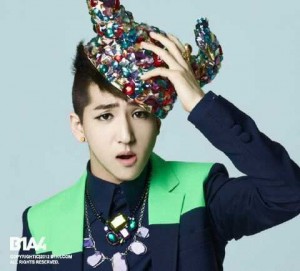 4th: B1A4 – “Baby I’m Sorry” (2012)
4th: B1A4 – “Baby I’m Sorry” (2012)
Peak Position: 19
Previous Peak: 67 “Beautiful Target” (2011)
Difference: +48
B1A4 was one of the groups burned at the stake earlier this year for supposedly beating out TVXQ in physical album sales. While the evidence against them for physical sajaegi was rather alarming, nobody ever mentioned the meteoric rise in the digital charts they encountered in 2012 with “Baby I’m Sorry.”
Peak Position: 9
Previous Peak: 62 (“Gossip Girl”, 2009)
Difference: +53
As mentioned, 2010 was a different time and, as demonstrated by Secret, it was not hard for girl groups to rapidly rise in the charts. Rainbow’s jump to number 9 with “A” is probably more attributed to the controversy they stirred from their belly dance than with manipulating sales figures.
Honorable mention: Stellar also used controversy to make a remarkable jump of +55 this year with “Marionette”, yet they failed to qualify for this list because the song did not crack the top 20; it peaked at only 35.
 2nd: Girl’s Day – “Twinkle Twinkle” (2011)
2nd: Girl’s Day – “Twinkle Twinkle” (2011)
Peak Position: 5
Previous Peak: 63 (“Nothing Lasts Forever”, 2010)
Difference: +58
Long before Girl’s Day was known for being sexy, they were known for being disarmingly cute and this was the song that officially put them on the map. “Twinkle Twinkle” came as a huge surprise and the sharp change of fortune it represented was highly unprecedented until…
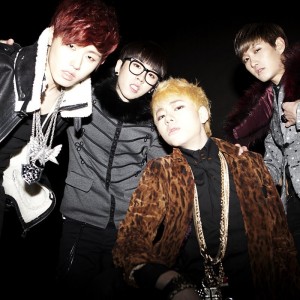 1st: Block B – “Nanrina” (2012)
1st: Block B – “Nanrina” (2012)
Peak Position: 11
Previous Peak: 70 (“Freeze”, 2011)
Difference: +59
Nobody ever seems to have anything bad to say about Block B, and putting them at number one on this list certainly isn’t my intention to do so. This number certainly came to me as a surprise. “Nanrina” is a good song and Block B certainly deserves praise and recognition for it, but were they really such nobodies before “Nanrina”? It’s hard to explain such a colossal rise, much less justify it. I’ll leave that job up to BBCs.
There are obvious limitations to the data presented above. This data says nothing about physical sajaegi and other methods of misrepresenting an artist’s popularity. It also neglects a wider accusation of sajaegi being used by top artists to achieve all-kills on multiple charts or to amass music show victories. What it does indicate is that these artists were once in need of a hit song in order to find their footing in the industry, and they got what they were looking for at just the right time. Whether or not they requested the help of Mr. Sajaegi in doing so is a matter of interpretation.
Are you the optimist who believes each of these artists earned their breakthrough hit through fair and square industry practices? Or are you more of the “glass is half empty” type who believes sajaegi was used in each and every incident? Are there songs or artists who I failed to mention which also managed to leapfrog the competition?
Update: Crayon Pop‘s “Bar Bar Bar” would easily earn the top spot with an unbeatable jump of +153, but the reason for that has been well documented already and so it has been omitted for obvious reasons.
(Gaon, Images via Dream Tea Entertainment, JYP Entertainment, Star Empire, Polaris Entertainment, TS Entertainment, NH Media, Cube Entertainment, B2M Entertainment, FNC Entertainment, SM Entertainment, WM Entertainment, Top Class Entertainment, Stardom Entertainment)


